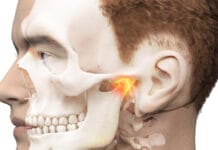The dreaded D-word: diagnosis. Why is it that such an integral part of every hygiene appointment is tiptoed around by hygienists? Dental hygienists are smart, focused, and, most importantly, trusted by our patients.
Think for a minute about the time patients spend with their hygienist versus the doctor – utilize it! There are three key responsibilities of the dental hygienist to complete at each appointment: build a rapport, identify concerns, and create value. The end goal is the overall health and well-being of our patients.
Let’s focus on rapport. By building a rapport with dental patients, we establish the grounds of a successful, long-term relationship. This is more than your basic small talk. Yes, we all ask about the weather and weekend plans, but we need to learn to dig a little deeper! Education is the core of our duties as hygienists.
Sometimes this means stepping out of our comfort zones and addressing concerns beyond the gingival tissue. Bleeding on probing – talk about it! Gingival margin decalcification – talk about it! High plaque index – talk about it!
What about carious lesions and cracked teeth? Traumatic occlusion? Abscesses? Are we out of our “hygiene bubble” now? Have we crossed the line into diagnosing? Absolutely not.
Planting the Seed
Hygienists who are able to properly co-diagnose are huge assets to a dental team ─ absolutely irreplaceable because they are value creators. By identifying concerns and alerting patients to what the doctor may recommend, dental hygienists are essentially “planting the seed.”
Go ahead and pop up an intraoral photo of the widened distal fracture on #30 with an existing MO amalgam. Explain what you see (I guarantee that they can see it too!). The verbiage goes something like this “I’d like to sit you up and discuss a few areas that I find concerning today. You can see that you have a very large silver filling on this tooth, and this area on the backside is a fracture or crack that I noticed today. This is something that is new from the last time we saw you. The doctor may recommend we steady this tooth by placing a full-coverage crown over the top of it.”
The patient has now heard about the fracture on #30 once. The photo stays on the screen, and they think about the value you just created until the doctor enters the operatory to perform the exam. “Doctor, I took a new photo of tooth #30 today. It looks like it has a widened fracture on the distal. I explained that you might recommend a crown to stabilize it today.” Now the patient has heard the news of the fractured tooth twice. This may seem a bit verbatim, but it’s essential.
The benefits of treatment completion must be thoroughly explained. This creates value. Believe it or not, your patient is already well on their way to treatment acceptance.
The doctor proceeds with the exam and confirms your findings. By this time, the patient has had ample time to digest the news and is much more likely to accept the dentist’s treatment recommendation.
Work Smarter and Together
Work with your dentist on co-diagnosis. It is an integral component of every successful dental practice. Work smarter. Work together. Create value that leads to optimized patient health and wellness; our ultimate goal.
If co-diagnosing is new to you, this may seem like a daunting task. It doesn’t have to be! Have an open and honest conversation with your dentist on what his or her comfort level is with the concept of co-diagnosing. Work together to understand in which situations your doctor will recommend a crown, filling, root canal, or other procedures.
To be successful with this, hygienists need to know their doctors’ tendencies well.
A relationship like this doesn’t happen overnight. It will take time to understand your doctors’ treatment recommendation protocols and behaviors. If, after some time, you still have reservations on what the doctor will treatment plan, it is important to sit down together and take some time to set guidelines. Make a template that highlights the most common misconceptions within your office and treatment planning cohesiveness among the hygiene team and the dentist. Does the dentist recommend repairing decay when it is halfway through the enamel or all the way into the dentin? In which situations will a crown be recommended rather than a filling? It will be helpful to look at radiographs and intraoral photos together of patients to understand rather than just talking about this briefly. It is important, and you should set aside time to make co-diagnosing as seamless as possible.
Most will be starry-eyed to understand the decline in incomplete treatment reports. They will be ecstatic to see their schedules filled with productive procedures and even more so about providing a valued service that aids in patient well-being and overall health.
You might be wondering by this point, what if my recommendation was wrong? No big deal. Don’t sweat it! In this example, if the dentist doesn’t feel that a crown is indicated quite yet, or if the fracture has extended to the root and is beyond repair, there are simple ways to acknowledge your findings and retain the value you’ve just created.
The dentist could state, “I’m so happy that we got a good photo of this tooth today. I agree that there is a fracture on the backside of this tooth, and I’d like to follow up on this at your next recare appointment to identify any changes. It will likely need a crown in the future.” When the dentist agrees, this retains value. Yes, there is a fracture. No, it doesn’t need to be repaired at this time. This doesn’t throw the importance of co-diagnosis out the window, and you shouldn’t be discouraged if this happens!
Continue to work hard to build a rapport, identify concerns, and create value. Don’t forget how smart, focused, and trusted you are. You are an asset to your practice! Your dentist will thank you, and your patients will thank you. The overall health and well-being of our patients are so vital!












